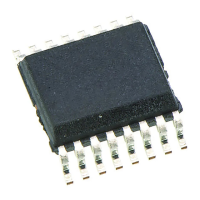RL78/G10 CHAPTER 5 CLOCK GENERATOR
R01UH0384EJ0311 Rev. 3.11 96
Dec 22, 2016
Table 5-3 shows transition of the CPU clock and examples of setting the SFR registers.
Table 5-3. CPU Clock Transition and SFR Register Setting Examples (1/2)
(1) CPU clock changing from high-speed on-chip oscillator clock (A) to high-speed system clock (B)
(The CPU operates with the high-speed on-chip oscillator clock immediately after a reset release (A).)
(Setting sequence of SFR registers)
Setting Flag of SFR Register
Status Transition
CMC Register
Note1
OSTS
Register
CSC
Register
OSTC
Register
CKC Register
EXCLK OSCSEL AMPH MSTOP MCM0
(A) → (B)
(X1 clock: 1 MHz ≤ f
X ≤ 10 MHz)
0 1 0 Note 2 0
Must be
checked
1
(A) → (B)
(X1 clock: 10 MHz < f
X ≤ 20 MHz)
0 1 1 Note 2 0
Must be
checked
1
(A) → (B)
(External main system clock)
1 1 x Note 2 0
Checking is
unnecessary
1
Notes 1. The clock operation mode control register (CMC) can be written only once by an 8-bit memory manipulation
instruction after reset release.
2. Set the oscillation stabilization time as follows.
• Desired the oscillation stabilization time counter status register (OSTC) oscillation stabilization time ≤
Oscillation stabilization time set by the oscillation stabilization time select register (OSTS)
Caution Set the clock after the supply voltage has reached the operable voltage of the clock to be set (see
CHAPTER 24 ELECTRICAL SPECIFICATIONS).
Remarks 1. ×: don’t care
2. (A) to (F) in Table 5-3 correspond to (A) to (F) in Figure 5-13
.

